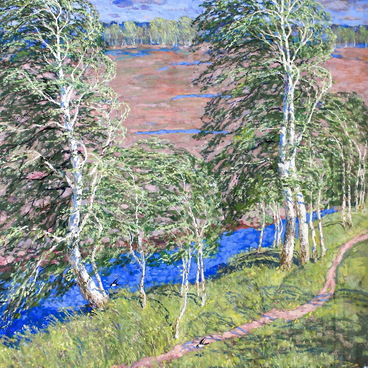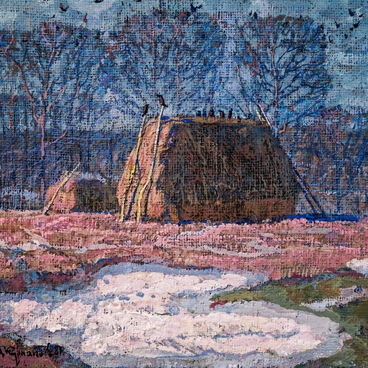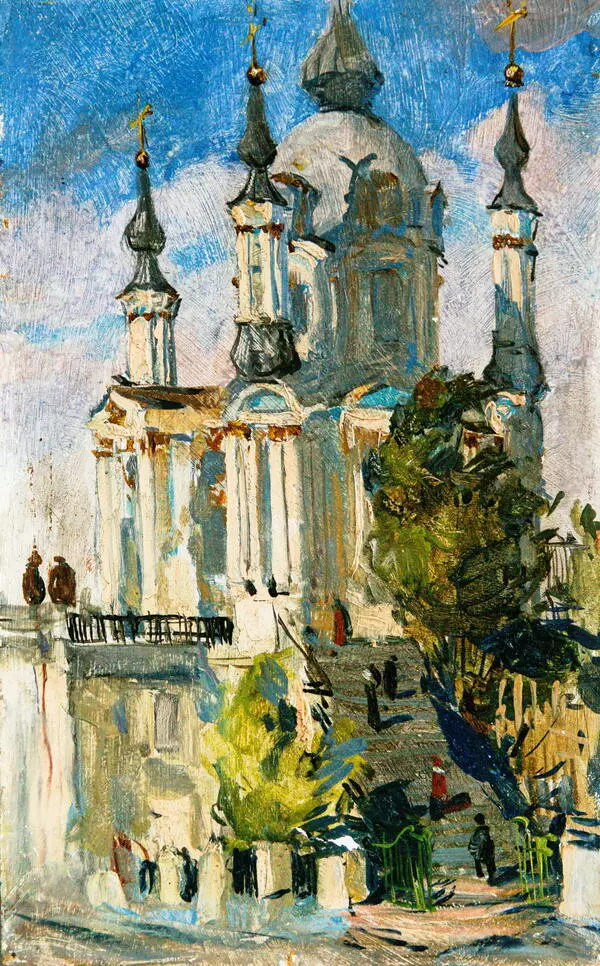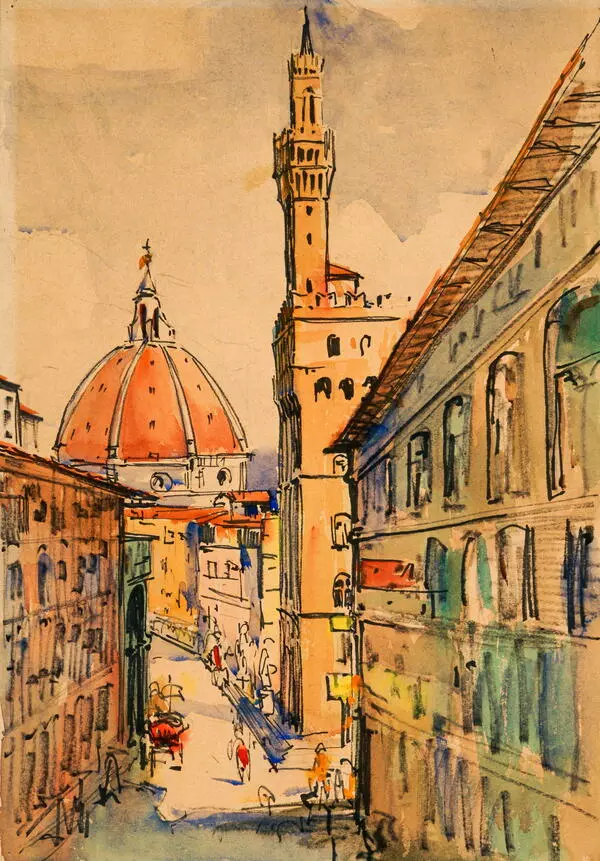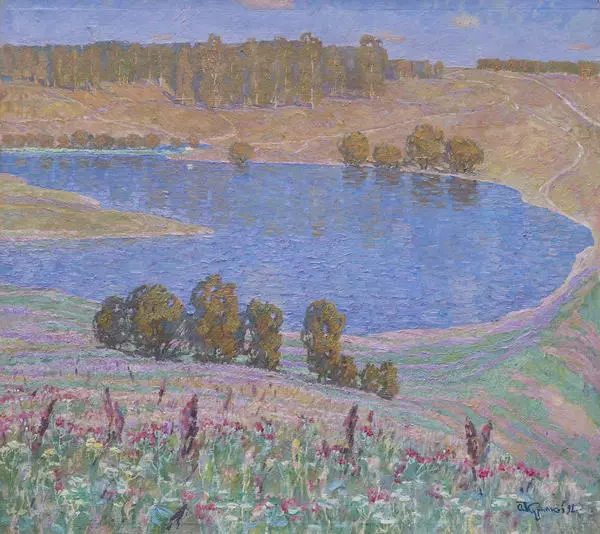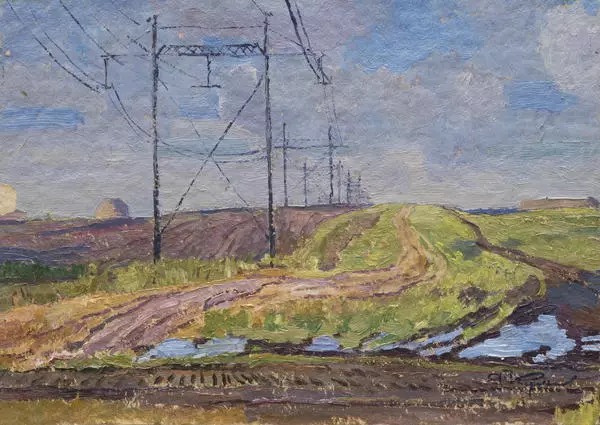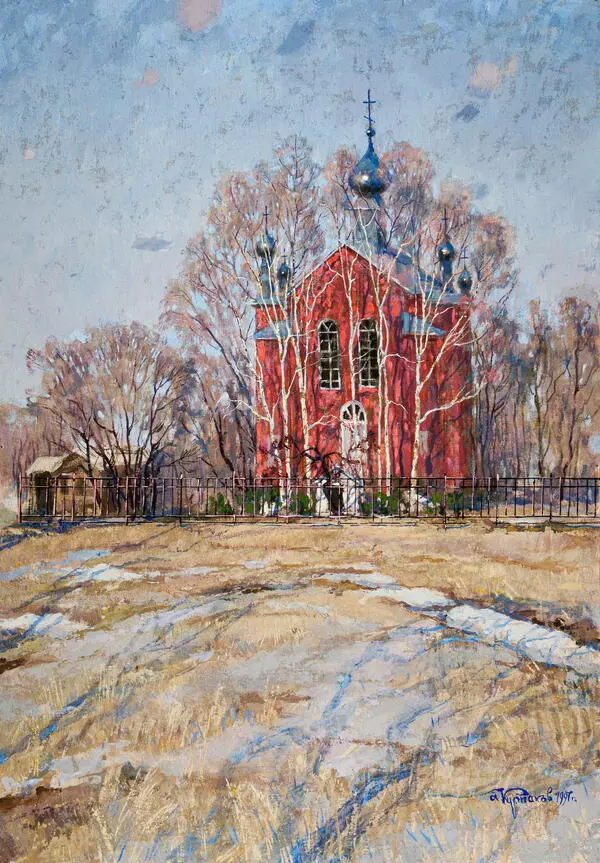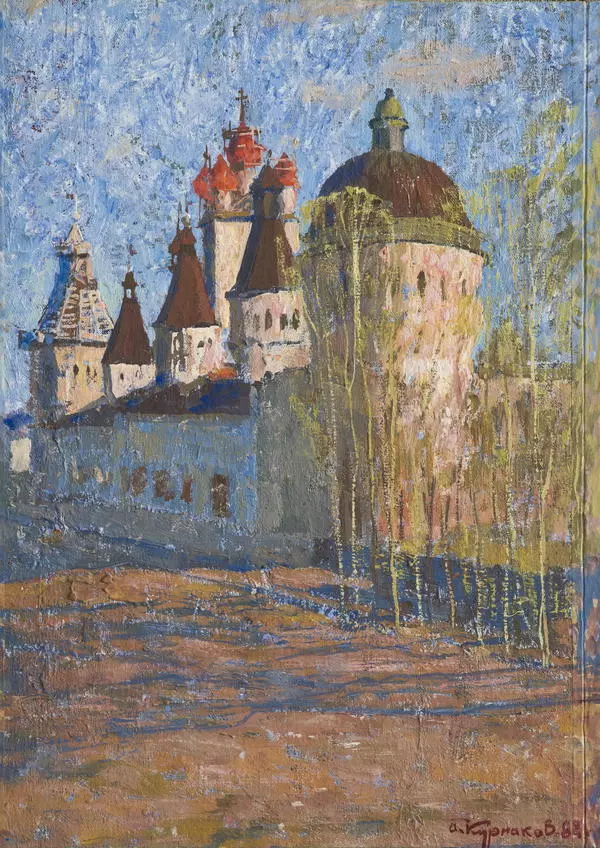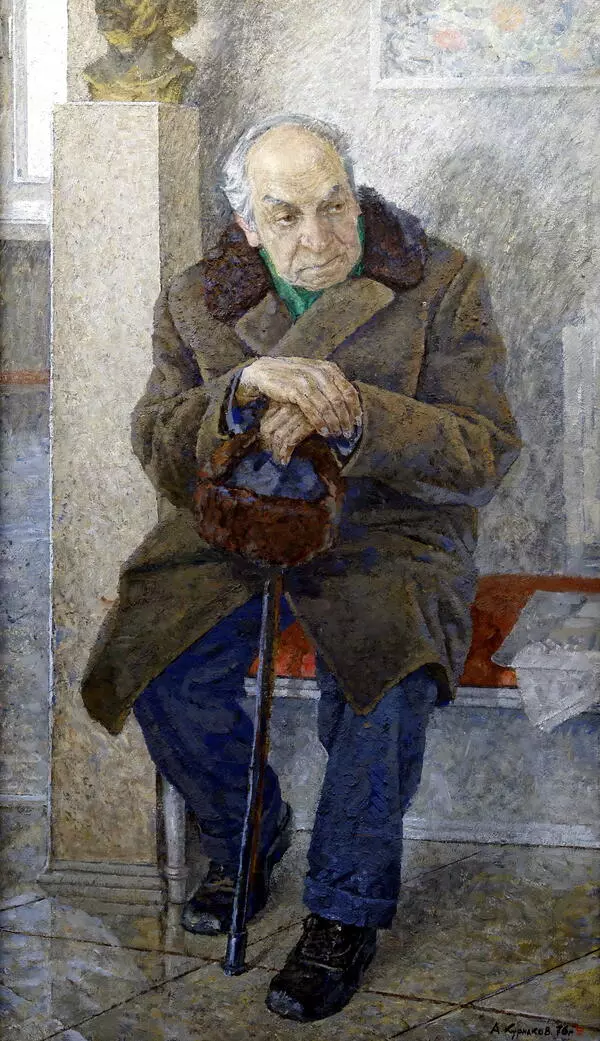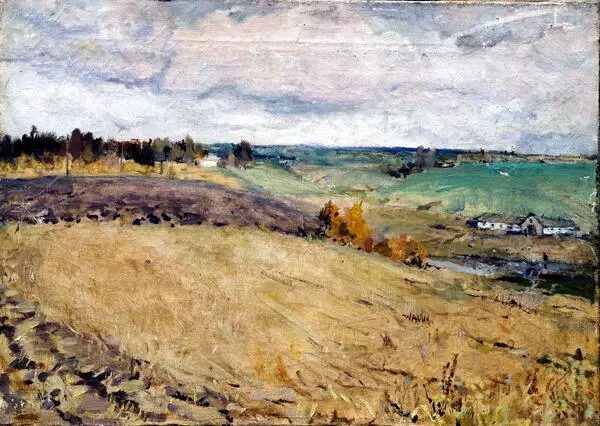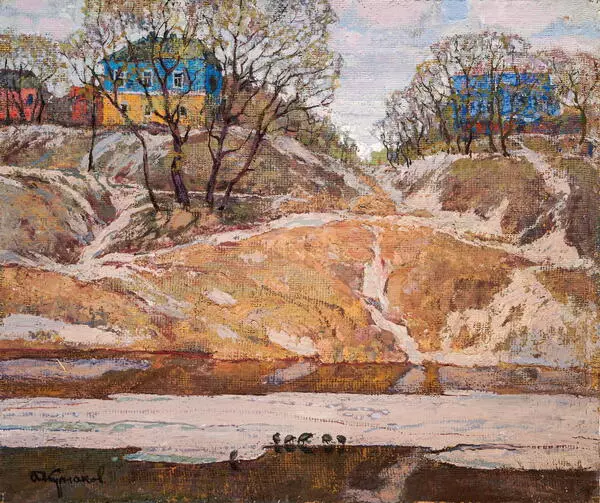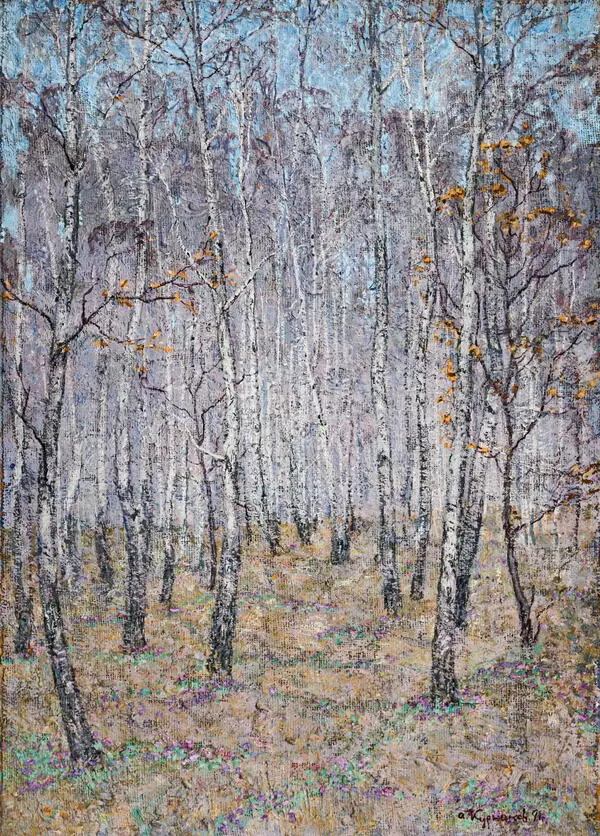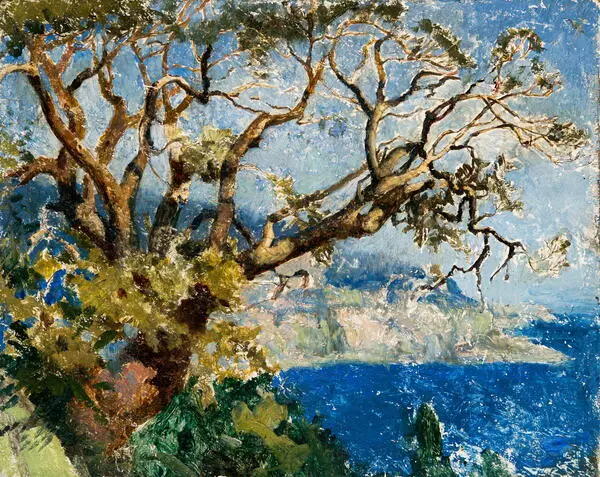“They Were Buried Where They Died” is one of the later paintings by Andrey Kurnakov. It belongs to the period of his work on the third diorama for the Oryol Military History Museum that was dedicated to the Oryol–Kromy operation and the offensive by the Red Army against the White Army. The artist was deeply engaged in the Russian Civil War at the time. His paintings also reflected the memories of the Great Patriotic War, in which he participated right until the surrender of Japan.
The landscape in this work is not just a secondary element or a background for the scene to unfold. It is the main character that captures the viewers’ attention. For this work, the artist employs his favorite tactics: he selects the season and chooses the format. The horizontal composition makes the image seem tranquil and monumental.
Most likely, the landscape was not painted from life, so the image of nature on display may be generalized. However, it looks quite typical of the Oryol region in early spring or late autumn. Kurnakov deliberately forgoes any movement in the landscape, aiming to create a panorama of Russian vast expanses and an image full of dignified tranquility.
This epic landscape celebrates the power of nature and reminds the viewers about the relentless passing of time, the relation between life and death, and how one does not exist without the other. The artist uses a foreground, a middle ground, and a background to fully unfold the abundance of nature of the Oryol region — from Yelets steppes to thick Bryansk forests. The landscape is easily discerned up to the distant horizon and changes throughout the entire pictorial space.
The foreground shows darkened dirty snow. The middle ground is a stubble field with remnants of snow. Further in the distance is a ravine; a small forest with Kurnakov’s beloved slender white birches that have spread their lilac branches; the rich ground of the field is ultramarine and brown instead of black, waiting to be warm and sown again; a bluish-violet forest’s silhouette is depicted against the glimmering horizon. Unnoticeable at first, the grave of a Red Army soldier is the key element for understanding the painter’s idea about the inseparability of life from death. The scene is overlooked by the somber sky, filled with flashes and heavy cumulus clouds, white and blue at the same time.
The landscape in this work is not just a secondary element or a background for the scene to unfold. It is the main character that captures the viewers’ attention. For this work, the artist employs his favorite tactics: he selects the season and chooses the format. The horizontal composition makes the image seem tranquil and monumental.
Most likely, the landscape was not painted from life, so the image of nature on display may be generalized. However, it looks quite typical of the Oryol region in early spring or late autumn. Kurnakov deliberately forgoes any movement in the landscape, aiming to create a panorama of Russian vast expanses and an image full of dignified tranquility.
This epic landscape celebrates the power of nature and reminds the viewers about the relentless passing of time, the relation between life and death, and how one does not exist without the other. The artist uses a foreground, a middle ground, and a background to fully unfold the abundance of nature of the Oryol region — from Yelets steppes to thick Bryansk forests. The landscape is easily discerned up to the distant horizon and changes throughout the entire pictorial space.
The foreground shows darkened dirty snow. The middle ground is a stubble field with remnants of snow. Further in the distance is a ravine; a small forest with Kurnakov’s beloved slender white birches that have spread their lilac branches; the rich ground of the field is ultramarine and brown instead of black, waiting to be warm and sown again; a bluish-violet forest’s silhouette is depicted against the glimmering horizon. Unnoticeable at first, the grave of a Red Army soldier is the key element for understanding the painter’s idea about the inseparability of life from death. The scene is overlooked by the somber sky, filled with flashes and heavy cumulus clouds, white and blue at the same time.

